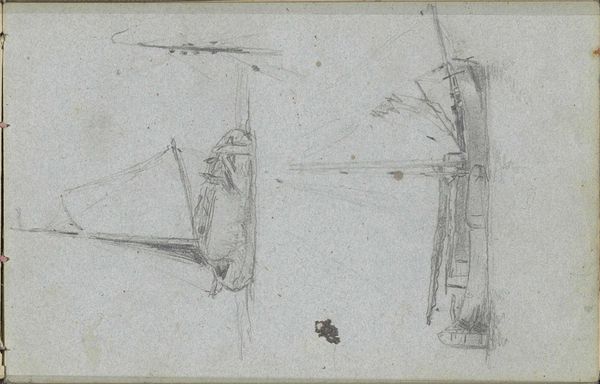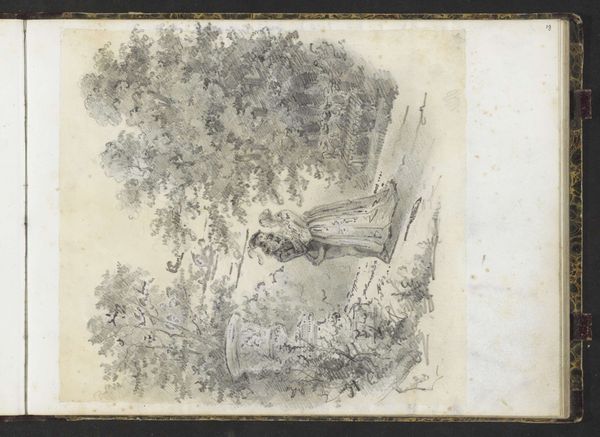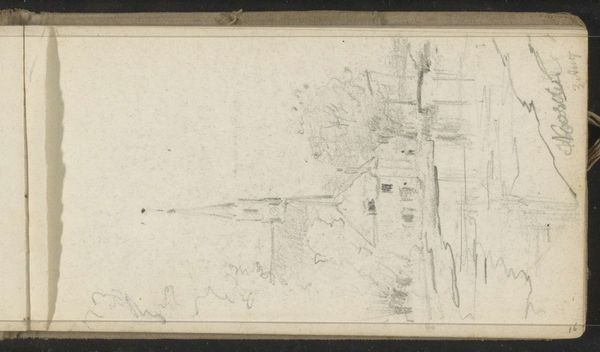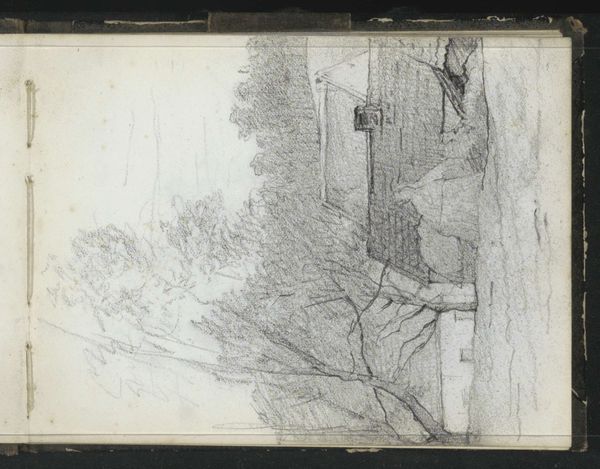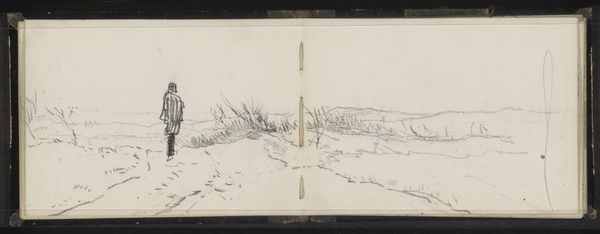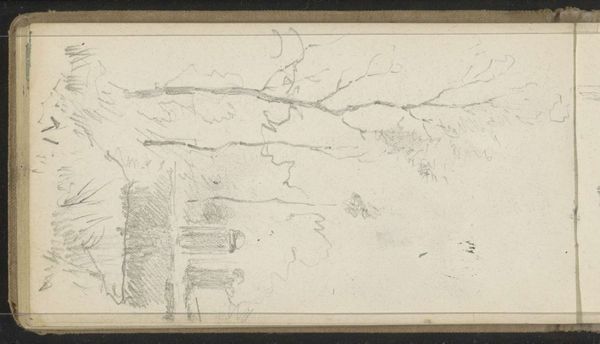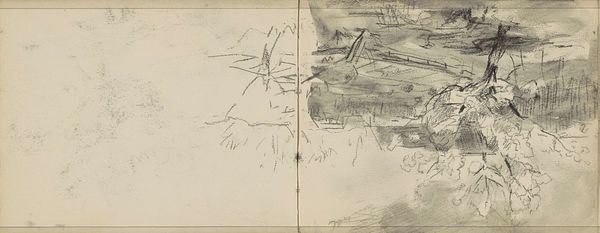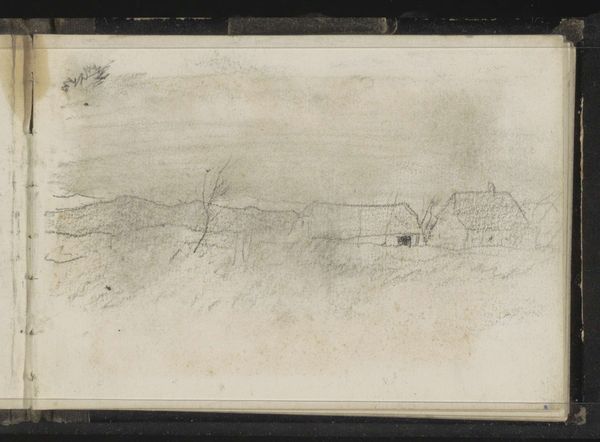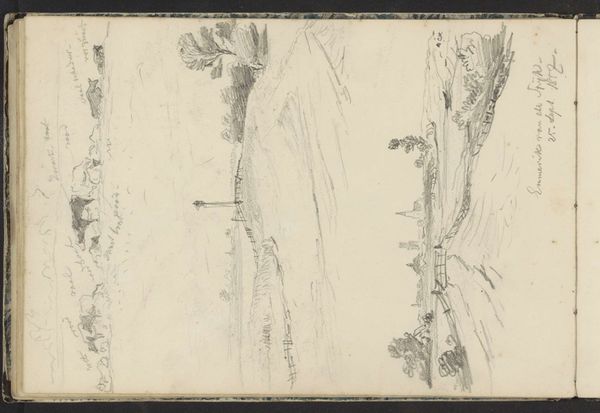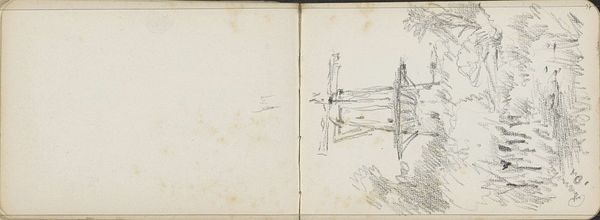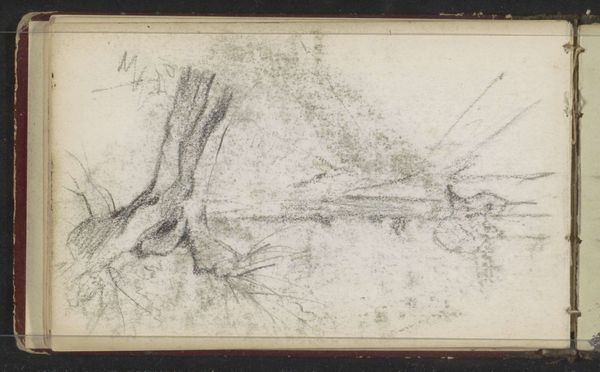
Molen aan de Delfshavense Schie en een boerderij aan de Beukelsdijk 1892 - 1895
0:00
0:00
drawing, paper, pencil
#
drawing
#
ink painting
#
dutch-golden-age
#
landscape
#
paper
#
coloured pencil
#
pencil
Dimensions: height 101 mm, width 157 mm
Copyright: Rijks Museum: Open Domain
Curator: Here we have Willem Cornelis Rip’s double-page drawing, "Molen aan de Delfshavense Schie en een boerderij aan de Beukelsdijk", made between 1892 and 1895. It’s executed with pencil, coloured pencil and ink on paper. What's your initial take? Editor: The sketch quality lends it a fleeting, almost dreamlike atmosphere, wouldn't you agree? The windmill looms, yet the overall impression is delicate. It speaks to impermanence and the quiet strength of rural life, but also there's melancholy in it. Curator: Absolutely. Rip has captured a traditional Dutch scene. On one page, we have a windmill by the Delfshavense Schie, a canal, and on the other, a farmhouse on the Beukelsdijk, a dike. It’s fascinating how these commonplace symbols are weighted with generations of cultural memory. Windmills as a stand-in for progress and industry, farmhouses speaking to domesticity and roots in the landscape. Editor: The windmill specifically takes on added symbolic weight in a Dutch context, of course. We see it in paintings from Van Goyen, down through Mondrian. Think about what these structures came to represent: ingenuity, a battle against the elements, and then this visual touchstone that also hints at something solidifying within national identity. It is a fascinating point about domesticity, too, considering these quiet, separate worlds set against the rapidly urbanizing centers like Rotterdam at the time. Curator: I agree. The juxtaposition of these two places in this sketch evokes a contrast between the industrialized elements and the rural stability that had a place in 19th century Dutch cultural and political anxieties. It subtly comments on society at the time as tradition slowly met modernity. The composition almost seems to question what “progress” looks like here, placing a solid farm, which feeds society, as equally vital as a canal windmill with its own specific purpose for the time. Editor: Perhaps the artist is suggesting a dialogue. This is a quieter, more human perspective. The history books shout, but art whispers, and that’s where we find true feeling. Thank you for helping tease out these observations about the piece, it does leave you thinking about a slower-paced life and remembering what matters as the modern world moves past. Curator: My pleasure. Art acts as this bridge between individual expression, history, and how those images, then and now, affect us emotionally, personally, and politically. I think Rip has presented a lovely way to think about these matters.
Comments
No comments
Be the first to comment and join the conversation on the ultimate creative platform.

